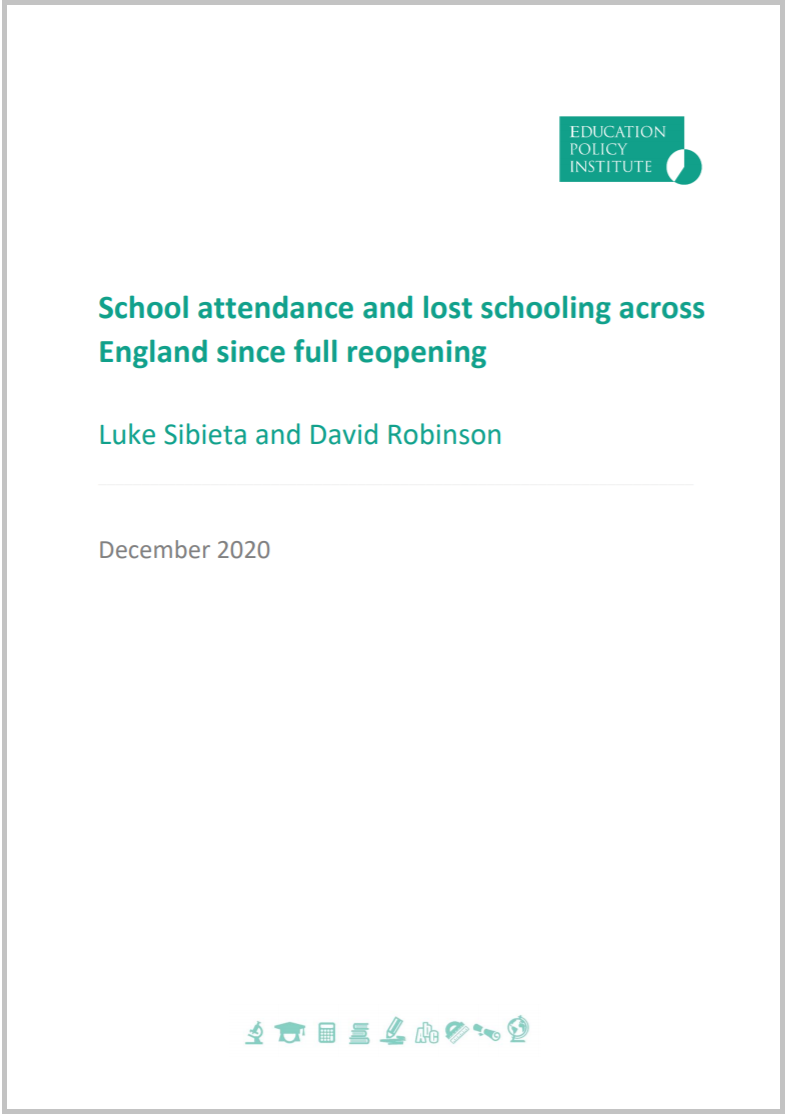Today the Department for Education has published new data on school attendance across local authorities in England – the first time such data has been published by the UK government since October.
EPI has published a new analysis paper on this data, as well as data from the Office of the Children’s Commissioner on the number of days of schooling lost by pupils.
The analysis considers how attendance rates and days of lost schooling vary across the country, and how they correlate with levels of disadvantage and prior GCSE results. The paper concludes by considering the implications for pupils’ learning, as well as government policy that seeks to mitigate learning loss
You can read the new paper here.
How do school attendance rates during the autumn term compare across the country?
- Attendance rates have been much higher in primary schools, with most areas seeing over 90% attendance levels. However, some areas have seen lower attendance levels of 80 to 85%, such as Sandwell, Dudley, Rochdale, Oldham, Newham and Tower Hamlets.
- Attendance levels in secondary schools have been much lower at around 80 to 90%. However, there are also large swathes of the country where attendance has averaged 75 to 80%, such as much of the North West, Yorkshire, and cities across the Midlands and North East. In some areas, attendance has been even lower: Rochdale saw attendance of 71%, while and Sandwell and Oldham both saw attendance of 72%.
How many days of learning have pupils lost over the autumn term?
- On average, primary school children in England have lost 3.5 days of schooling over the autumn term relative to pre-pandemic levels. A small number of local authorities have seen primary school children lose more than 6 days of schooling, including parts of Birmingham and Manchester.
- Secondary school children have lost about 6.3 days of face-to-face schooling, on average, but, there are many cases where pupils have lost more than 10 days. This includes Rochdale, Oldham and Sandwell, where pupils have lost about 13 days on average over the autumn term. In sharp contrast, pupils in many rural local authorities have lost less than 4 days relative to pre-pandemic levels.
Is there a connection between lost schooling and disadvantage and GCSE results?
- Broadly speaking, areas with lower prior GCSE results have seen more days of lost schooling relative to pre-pandemic levels, such as Knowlsey, Oldham, Rochdale and Sandwell, where pupils have lost around 10 or more days of face-to-face schooling over the autumn term. However, there are some areas with similar low prior GCSE results where pupils have lost less than 4 days of schooling, such as the Isle of Wight.
- Areas experiencing higher levels of disadvantage have also seen greater days of lost schooling per pupil, both amongst primary and secondary schools. Again, this relationship is far from perfect. For example, the share of pupils eligible for free school meals is similar across Islington and Knowsley, but secondary school pupils in Islington have only lost about 4 days of face-to-face schooling on average, compared with 10 days in Knowsley.



